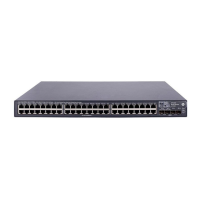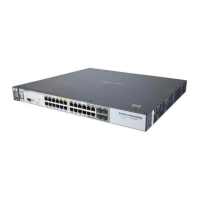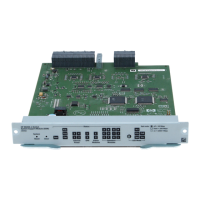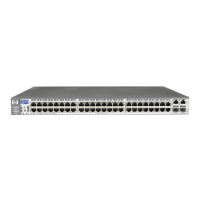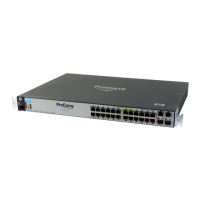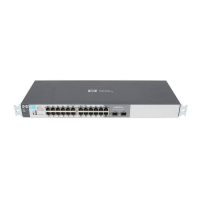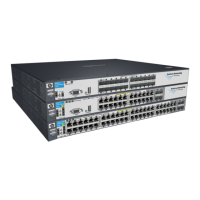Web and MAC Authentication
Configuring the Switch To Access a RADIUS Server
■ Configure the client device’s (hexadecimal) MAC address as both
username and password. Be careful to configure the switch to use the
same format that the RADIUS server uses. Otherwise, the server will
deny access. The switch provides four format options:
aabbccddeeff (the default format)
aabbcc-ddeeff
aa-bb-cc-dd-ee-ff
aa:bb:cc:dd:ee:ff
Note on MAC Letters in MAC addresses must be in lowercase.
Addresses
■ If the device is a switch or other VLAN-capable device, use the base
MAC address assigned to the device, and not the MAC address
assigned to the VLAN through which the device communicates with
the authenticator switch. Note that each switch covered by this guide
applies a single MAC address to all VLANs configured in the switch.
Thus, for a given switch, the MAC address is the same for all VLANs
configured on the switch. (Refer to the chapter titled “Static Virtual
LANs (VLANs)” in the Advanced Traffic Management Guide for your
switch.)
Configuring the Switch To Access a
RADIUS Server
RADIUS Server Configuration Commands
radius-server
[host <ip-address>] below
[key < global-key-string >] below
radius-server host <ip-address> key <server-specific key-string> 4-15
This section describes the minimal commands for configuring a RADIUS
server to support Web-Auth and MAC Auth. For information on other RADIUS
command options, refer to
chapter 6, “RADIUS Authentication and Account-
ing” .
4-14
